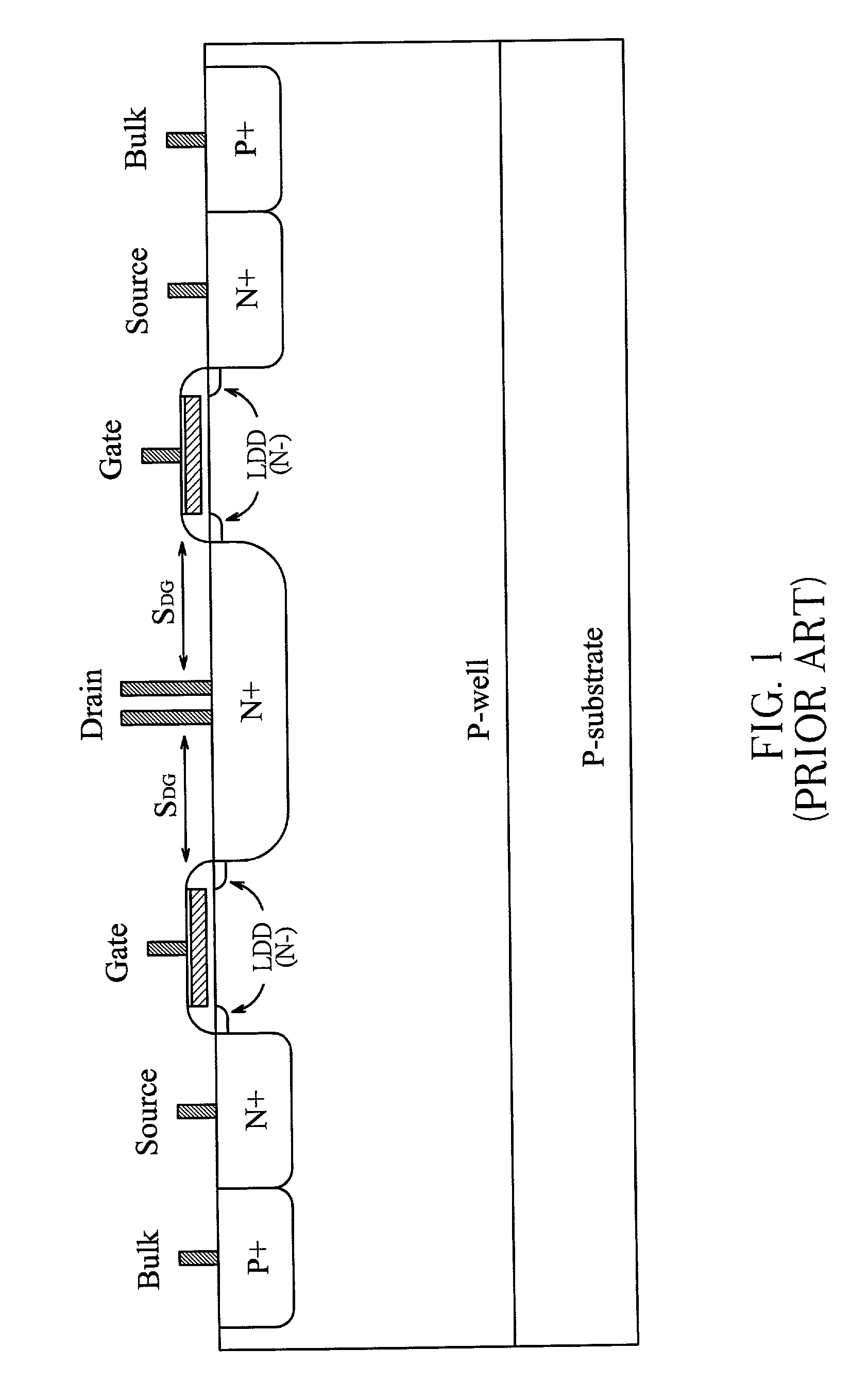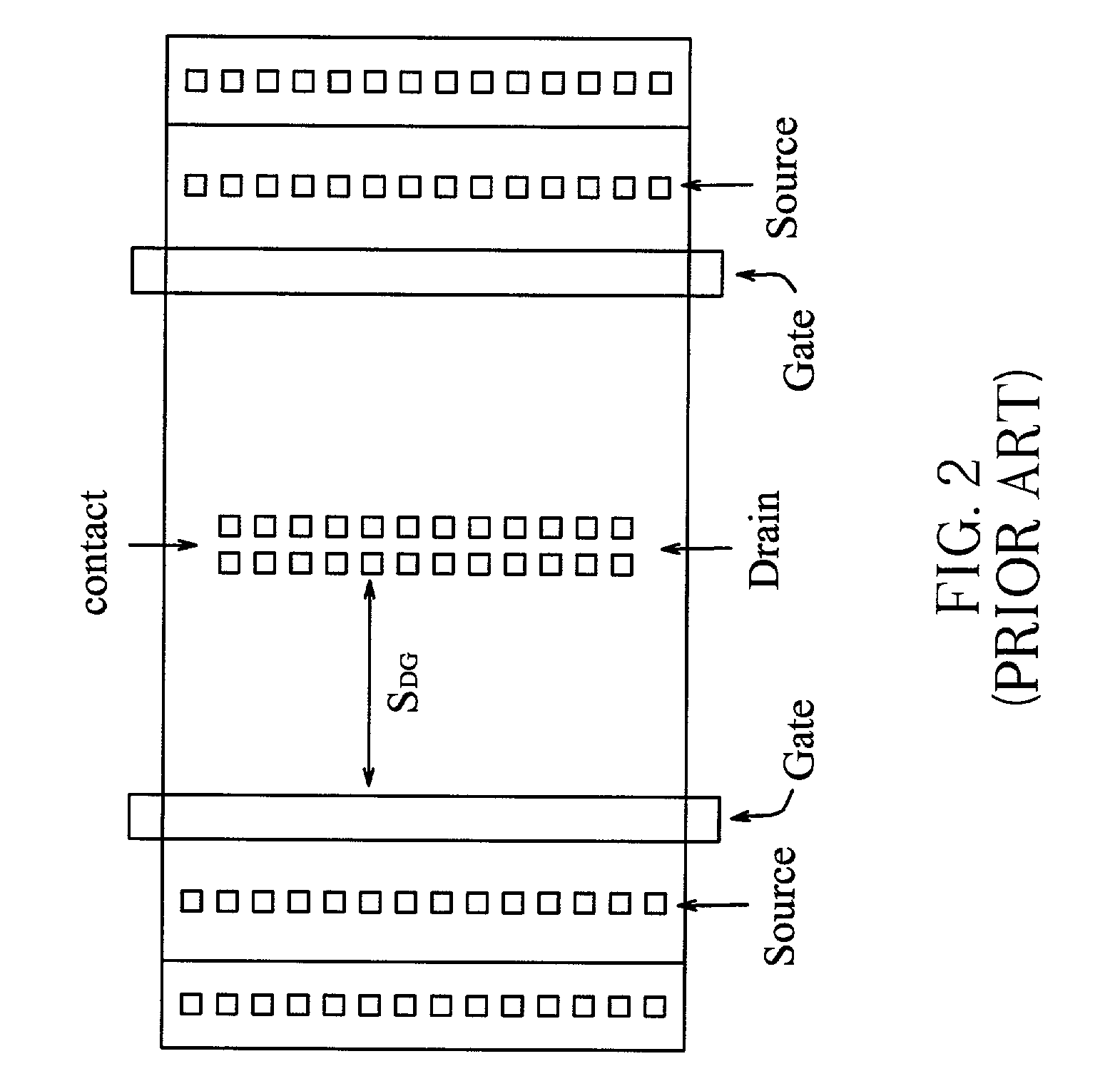Method for manufacturing semiconductor devices having ESD protection
a technology of electrostatic discharge and semiconductor devices, which is applied in the direction of semiconductor devices, diodes, electrical apparatus, etc., can solve the problems of undesired hot electron effect, undesired peak structure of ldd structure, and increased esd stress on scaled-down mos devices and thin gate oxides
- Summary
- Abstract
- Description
- Claims
- Application Information
AI Technical Summary
Problems solved by technology
Method used
Image
Examples
Embodiment Construction
[0029] FIG. 9 illustrates the ESD implantation within an NMOS device and FIG. 10 is the corresponding layout of FIG. 9. According to the first embodiment of the invention, an NMOS with ESD protection includes a gate structure with spacer sidewalls 101, a source region 103 and a drain region 104 beneath a drain contact 102. The LDD (lightly doped drain) regions formed underneath the sidewalls 101 and extending from the source region 103 and drain region 104 respectively is to reduce the hot carrier effect. For example, a typical LDD region is formed by phosphorous implantation or arsenic ion implantation.
[0030] Referring to FIG. 9 and 10, an ESD implantation region 105 with a p-type doping concentration higher than that of the p-well is formed beneath the drain region 104. The layout pattern of the ESD implantation region 105 surrounding the drain contact 102 with respect to the top view as shown in FIG. 10 can be further drawn as a plurality of separated small blocks in parallel to ...
PUM
 Login to View More
Login to View More Abstract
Description
Claims
Application Information
 Login to View More
Login to View More - R&D
- Intellectual Property
- Life Sciences
- Materials
- Tech Scout
- Unparalleled Data Quality
- Higher Quality Content
- 60% Fewer Hallucinations
Browse by: Latest US Patents, China's latest patents, Technical Efficacy Thesaurus, Application Domain, Technology Topic, Popular Technical Reports.
© 2025 PatSnap. All rights reserved.Legal|Privacy policy|Modern Slavery Act Transparency Statement|Sitemap|About US| Contact US: help@patsnap.com



